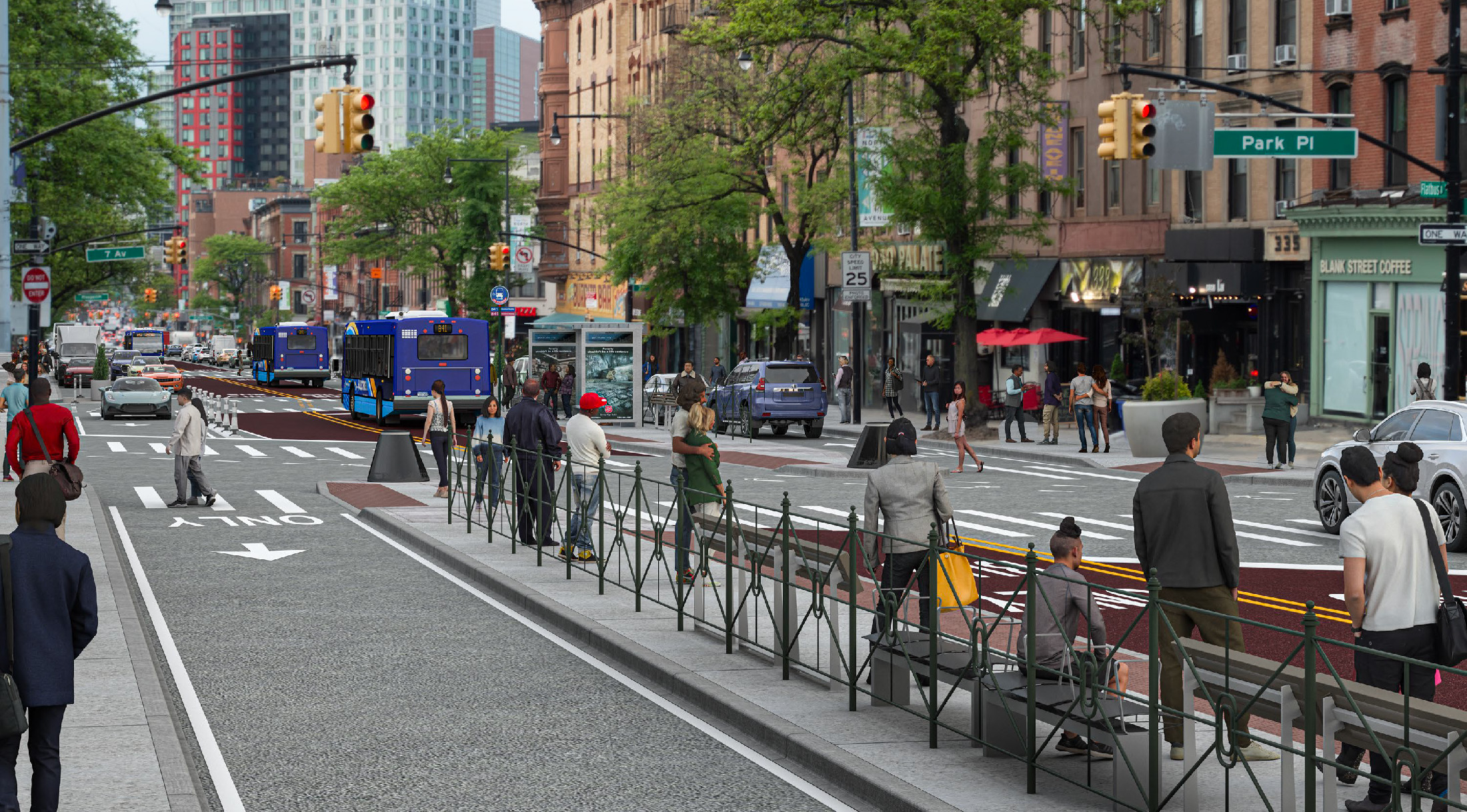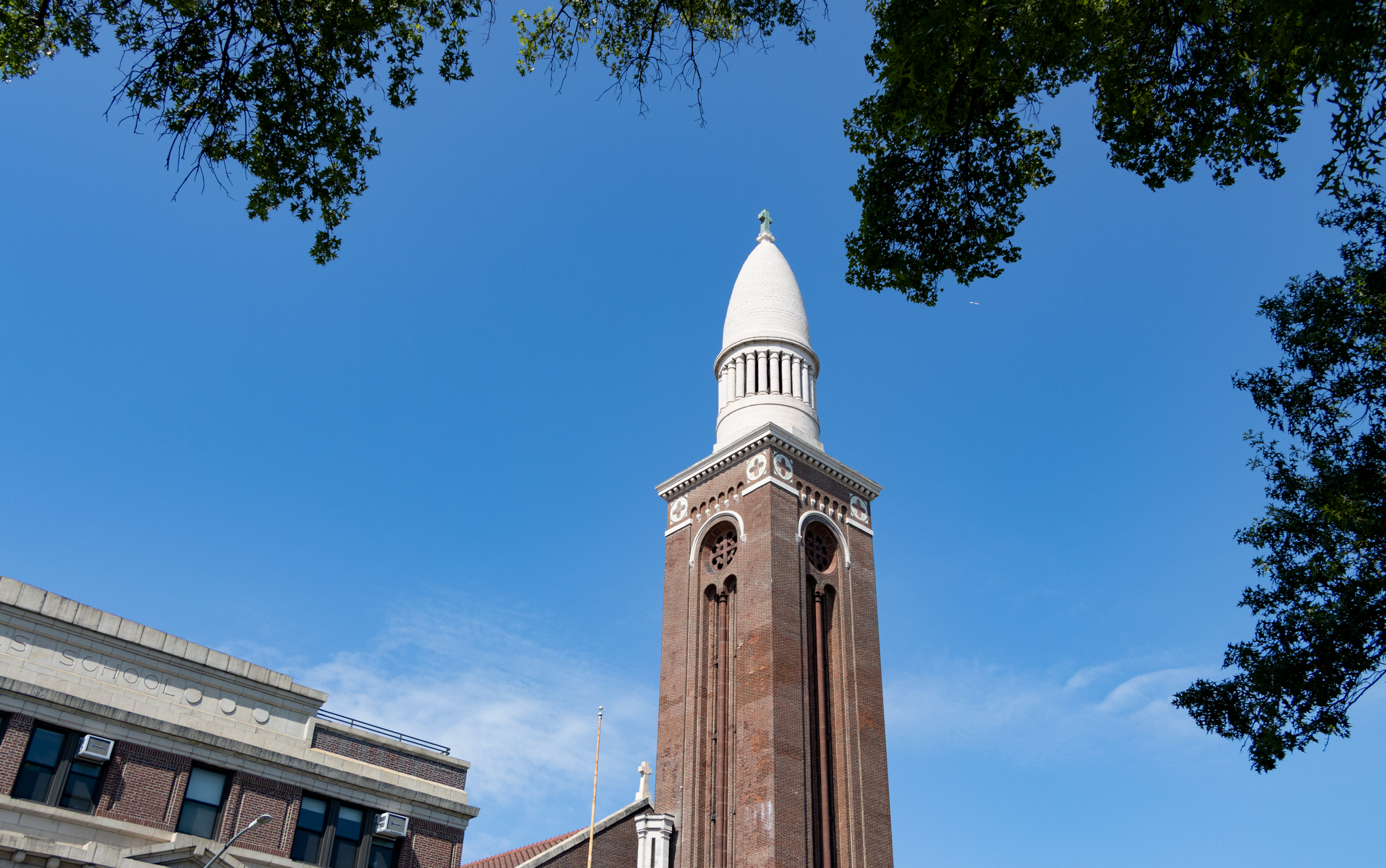Building of the Day: 196 New York Avenue
Brooklyn, one building at a time. Name: Former Beers-Dutcher Mansion Address: 196 New York Avenue, between Prospect and Park Places Neighborhood: Crown Heights North Year Built: 1892 Architectural Style: Queen Anne Architect: possibly Charles D. Marvin Landmarked: Soon! Calendared in Phase 2 of CHN HD, to be voted on in June, 2011. The story: What…


Brooklyn, one building at a time.
Name: Former Beers-Dutcher Mansion
Address: 196 New York Avenue, between Prospect and Park Places
Neighborhood: Crown Heights North
Year Built: 1892
Architectural Style: Queen Anne
Architect: possibly Charles D. Marvin
Landmarked: Soon! Calendared in Phase 2 of CHN HD, to be voted on in June, 2011.
The story: What a history this house has had. It was built for Nathan T. Beers, a very successful stockbroker whose father was one of the founders of modern day Wall St. Over the years, several Beers daughters were married in the house, as chronicled in the Brooklyn Eagle. Nathan Beers died in 1906, and the house was sold to Silas P. Dutcher, a fellow stockbroker and banker, as well as philanthropist, politician, and one-time mayoral candidate. Dutcher was one of the most influential Republican politicians in Brooklyn, known as one of the “Three Graces”. They ran Brooklyn politics for years. He only lived in the house for about three years. He and his wife, as well as their 6 children, were preparing for a celebration of their 50th wedding anniversary, by having a large party in the house. Sadly, on the day of the party, on the morning of the anniversary, Silas Dutcher suffered a fatal stroke, and died. He was 80 years old. The Silas P. Dutcher School (PS 124) in Sunset Park is named after him.
In the 1940’s, the house was donated to the influential Leek School, run by educator Carl Freschenel, a pioneer in the understanding and education of autistic children. Until his work, most autistic children were simply institutionalized, but Freschenel pioneered methods of communication and education that are still in use today, allowing autistic children to lead productive lives with their families. The Leek School itself is now in Boston. 196 NY Ave. was home to many high society fund raising events for the school, with concerts and dinners taking place, and limousines parked in front of the house.
By at least 1959, the building was home to the League School, which ran a day hospital for severely disturbed schizophrenic children. They too, moved to larger facilities and are still in operation in Brooklyn, working now with many forms of developmentally disabled children. The building was donated to the Baptist School across the street, and was called the Rugby School. Apparently it was they who stripped the remaining detail from the interior. But by the 1970’s the church had lost the house for taxes, and it was taken by the city.
It sat abandoned and crumbling, on its large fenced-in lot for over 30 years, known by neighborhood kids as the haunted house. Although sealed, the roof had serious damage, and the dormers had collapsed. In 2002, HPD put this house, and another sealed up city house a couple of blocks down, on the market, part of a program that would renovate the house into three units, with an owner-occupied landlord. The house was gutted and reconfigured. The only remaining original detail left was the window to the right of the front door, and that was restored. Today, the house is once again a community landmark, and is known as “the Mansion”. Its owners have done a lot of research on the house, and are proud stewards of its legacy.

(Photo: 1970’s tax photo, Property Shark)





The pity is that the cheapest doors at Home Depot are, usually, the simplest and most attractive ones. It is when they start adding the (more profitable) bells and whistles – like the gloppy “stained glass” inserts – that they spark the sobriquet. Which is, incidentally, a convenient but undeserved shorthand, since almost any lumber yard has the same stock.
c
PS Benson is too modest to say this, but he lives in a cute little Cobble Hill rowhouse, with wooden windows and a double-parlor. Just before they left to catch Bin Laden, the Navy Seals found his house; he has faux-1940s kitchen appliances, a big fiesta-ware collection and a complete run of OHJ.
Bfarewell;
My comments regarding Home Depot were not directed at your posts. I was referring to the fact that the term “Home Depot Doors” has become shorthand on this site for a type of scorn.
Your comments regarding the LPC are disingenuous. The LPC currently has 20,000 buildings under its jurisdiction, and is adding thousands more. It was recently pointed out in an article in Atlantic Magazine that 15% of the lots below 96th St. in Manhattan are in landmark districts. Likewise, the landmarked districts in Brooklyn are in the areas that are closest to Manhattan, and best-served by mass-transit. It defies all urban planning common-sense, and also wise energy use, to have this situation. It freezes development in precisely the areas that should be redeveloped, as the city grows. The net effect of this impairment on new housing supply is the high cost of housing and long commute times one sees in NYC, which may impact its economic prospects.
Finally, I am sure that develepors in the 19th century were not motivated by profits (sarcasm alert).
Okay, couple things-
You seem to have mis-read my post. My post was explicitly *not* bagging on people who can’t afford fancy crap. I was actually trying to explain to the ‘death by restoration’ poster why it is better to be able to salvage a nice building even if it means not reproducing an interior which has been destroyed by neglect.
Now, if you walk into a nice brownstone that needs a little bit of extra work to restore its original character and beauty, but instead you rip everything out and carve it up into a bunch of little crappy rooms, you’re a jerk. If you have a brownstone (or whatever) that is in bad shape, and you work on it as best you can, bully for you. If you have a shell, and you do whatever you want to the interior, okay fine (though good design doesn’t actually cost more to build than bad design, and I always hope people will make nice things instead of crap).
But I digress. You’re talking (it seems) about LPC, which attempts to control how you modify your existing historic _exterior_ of your building.
You seem to think that LPC is somehow mandating that everyone live in historic brownstones. This, clearly, is gibberish. There are _innumerable_ new buildings (some of which are very nice – my background is in architecture and I love a nice new building) which, last time i checked, anyone could live in.
You’re welcome to live in a building (or wear a suit) as hideous as you please- the LPC can’t stop you.
(If, btw, you believe that most developers spend their time worrying about the aesthetics of home depot fixtures because their refined aesthetic sensibilities are in conflict with their meager budgets, I would like some of your meds.)
Bfarwell;
I don’t disagree with anything you wrote above. I recognize that this house was built for a wealthy person, and as such, was tastefully and skillfully done. Where I part company with the preservationist is as follows (and I’ll continue with your clothes analogy):
-surely you must recognize that some folks don’t have the means to buy a YSL suit, and must shop in H & M. Would you consider it socially acceptable to point at such a person in the street and say “Look, he’s wearing a H&M suit!!”. I don’t thinks so. So perhaps you can explain to me why it is acceptable to rag on Home Depot doors and fixtures on this site as if the homeowner had some blatant disregard for aesthetics, when that is all some people can afford?
-If someone wants to buy an old YSL suit in a thrift store and it still serves their purpose, fine by me. Ditto for old homes. Would you consider it acceptable, however, to mandate BY LAW that someone wear such an old suit? I don’t think so. It seems to me that that is exactly what the LPC does.
I never said new development wasn’t cheaper than nice old houses, benson. Wearing clothes you find at H&M is also cheaper than shopping at Yves Saint Laurent, but they are sorely lacking in the function and durability department.
And, if you manage to take care of your YSL suit, you can wear it for a long time and look fabulous, while your cheap suit from H&M will have long since disintegrated.
Or, if you go to the thrift store, sometimes you can get a YSL suit for pennies on what it originally cost, and look fabulous in something you couldn’t afford new, but which has all the luxury and functionality of a high-end suit, despite being a number of years old and perhaps needed a button or a seam repaired.
Except that so much new development is built far less well, and is certainly more ugly.
Hi all, i am the owner- the name is Tommye- I wrote a 5 page disertation at 3am but it never got posted. What gives? Is it because I named the construction crew? I only posted to thank them.
Anyway until it does get posted- I would just like to thank everyone for their comments. Man, I even addressed bkny and Doelger 440 and thanked bxgrl. Add benson and bfarwell to my list of thank yous.
bkny- if you were at my house then surly I explained to you the disappointment of not having much of the rich history this house had to save. I was only able to save the stairs (reluctantly) and the front window (in need of a complete renovation).
Any questions please fell free to ask. I have some before and after photos of the renovation in progress.
“It would take five times as long and cost five times as much to restore it, compared to just hauling it away and putting up something else. ”
Exactly. Thanks for making the case for new development!
While I understand the disappointment with the interior, bxgrl is right; there are so many cases where a building lost all its original detail/beauty long before it was actually ‘renovated’.
I have to remind myself of that when I’m walking around and see, through the windows of a grand exterior, sheetrock ceilings and Home Depot fixtures- they were often a replacement for stuff that was damaged beyond repair, when replacement-in-kind wasn’t an option for the folks buying the building.
Sure, there are houses that get mauled by eager-to-flip developers with track lighting and hollow-core doors while they throw the oak in the dumpster, but there are a number of buildings (still) in this nabe that would benefit from any possible scheme to get them habitable.
It’s also worth noting how much _more_ work it takes to restore something. Glancing around my dining room, there are lots of old moldings and a mantle and historical whatnot, but they’re broken off in places, drippy with paint, gouged, nailed, partially missing, etc. etc. It would take five times as long and cost five times as much to restore it, compared to just hauling it away and putting up something else.
Do I wish stuff had been consistently taken care of through the ages so that it was in nice condition now? Well, sure. But frankly, it’s often lucky to have made it this far at all.
(Our dream house across the street is boarded up, but I *know* it’s beautiful inside. How many more years of being boarded up will it take before it isn’t salvageable any more? Breaks my heart.)